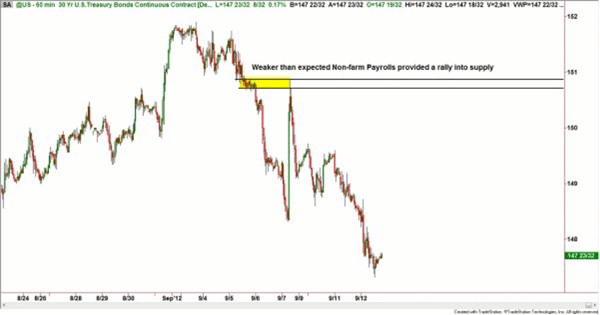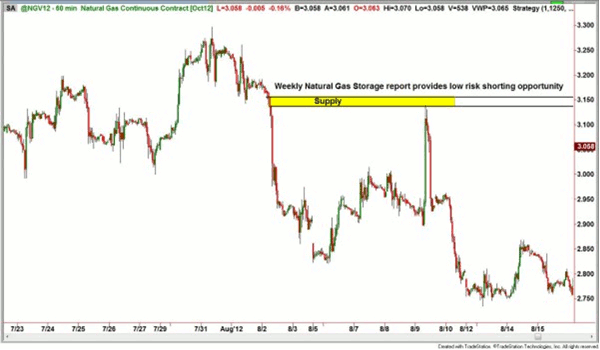Gabe Velazquez of Online Trading Academy explains how professional traders take profits from inexperienced traders during economic announcements.
During the course of every month, there is data released from various sources (primarily the government) that reflects the state of the economy.
There are inventory numbers in certain commodities, and on the months when the Federal Open Market Committee (also known as FOMC) meet, their decision on monetary policy is widely watched by market participants. In addition, over the last 12 months or so, news coming from the European Central Bank has enormously impacted markets here in the US.
Traders should have as part of their daily routine a calendar check early every morning before they begin their trading day. Having this information and actual time of the releases enables a trader to make the necessary preparations if she elects to be in the market at the time of the release. There’s always the option to stay out of the market all together when the data hits the news wires, which is what novice traders should consider.
When it comes to data being disseminated, the general consensus is that good news is to be bought and bad news is to be sold. This thought process is what leads the general public (more often than not) to hand over their hard-earned money to the institutions, the market makers, and the professional traders who know how the markets really work.
How many times have you seen a stock sell off on a good earnings report? Or how about when the market rallies on a bad economic report? This just happened on the most recent non-farm payrolls release.
This type of contradictory behavior baffles many market participants because they don’t understand that the markets are often times bought and sold based on perception, rather than reality. Also attributable to this type of market behavior is the fact the market is usually forward-looking, discounting future events in the present.
For some traders, news releases conjure up dangerous levels of volatility to be avoided. This is a good course of action for those who lack the plan or confidence to trade in this environment. For the trained professional, however, these days can offer plenty of low-risk opportunities.
The first Friday of every month, the US Department of Labor releases the non-farm payroll employment report. This is a comprehensive report on the state of the labor market, and more importantly for traders, it typically has a big influence on the direction of the stock index and bond futures. This is because it hits the tape at 8:30 a.m. EST, one hour before the open of the New York Stock Exchange.
As I mentioned earlier, most pros look forward with anticipation to this report, as it usually offers great opportunities. This was exactly the case on September 7 in the 30-year bond futures contract.
Next: Bonds love bad news
|pagebreak|Bonds love bad news, as the typical reaction of the bond market is to rally when the economy looks lackluster. Looking at the chart below, we can see that’s exactly what happened on Friday as the numbers came in below expectation. Most novice traders would try to buy the bonds, and if they were quick enough, they could have done so and perhaps even made some money—but only by taking a considerable amount of risk.
The professional, on the other hand, would have been positioned using a limit order at the level where we see institutional supply, and taken a very low-risk entry with huge profit potential. This runs counterintuitively to what most think, but that’s why we love these reports, since we needed the untrained novice to sell to in this trade.
Similarly, every Thursday at 10:30 a.m. EST, the US Energy Information Administration releases the weekly natural gas storage report. This is essentially a report of the actual supply and demand of natural gas in storage.
The chart below was the August 3 report. Like in the last example, the data was at first blush bullish, which produced a low-risk selling opportunity into a high-quality supply zone.
The lesson here is that preparation often meets opportunity, if you know when and where to look. Until next time, I hope everyone has a great week.
Gabe Velazquez is a trading instructor at Online Trading Academy.























